Creating space for outdoor living has grown as a landscape trend since the middle of the last century, especially regarding small gardens, taking priority over using the garden to grow plants. But for some, the main reason for having a garden, no matter how small, is to give the plantings priority and grow as many plants as possible.
These abundant gardens are a world away from contemporary minimalist gardens, where some designers use plants as just another landscape building block. For some, giving plants priority in a small garden doesn’t make sense, when living space is at a premium and plants take space that would otherwise have been used for outdoor entertaining and barbecuing. But to those who favor plants in the garden, abundant planting creates a garden that provides a place of solace. The dressing of walls and fences combined with overflowing, layered plantings and billowing containers creates an enjoyable sense of enclosure and safety.
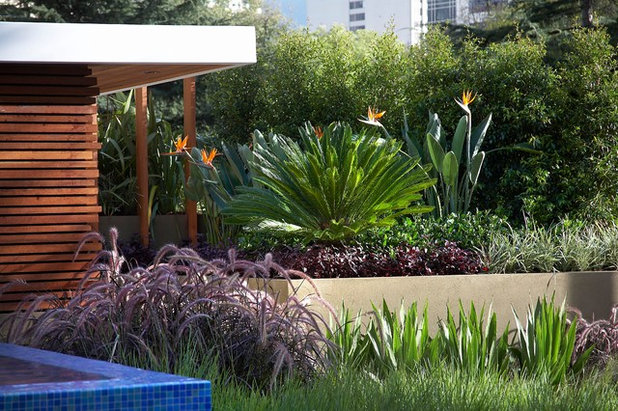
Dean Herald-Rolling Stone Landscapes
What makes a garden abundant? It is not just the number of plants but the way the plantings are treated to encompass the whole garden, from climbers dripping from walls and fences to borders layered with plants in a profusion of colors and textures.
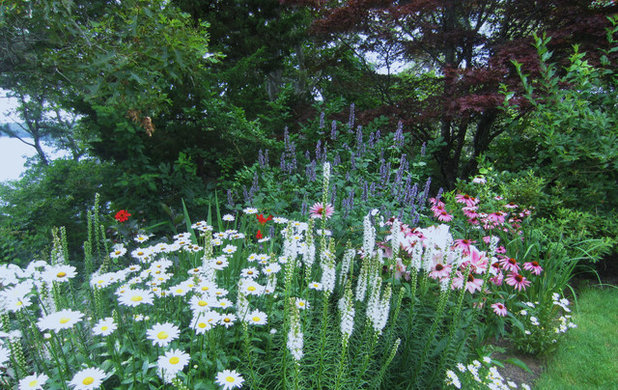
Maria Hickey & Associates Landscapes
Enriched SoilGardens where every square inch of soil is being cultivated place a lot of pressure on soil fertility. To achieve optimum plant growth, regularly apply garden compost, mulch or another organic matter. In small gardens consider a wormery for quicker compost production.
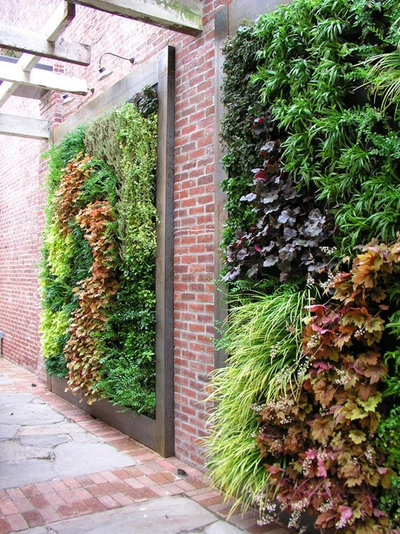
EcoWalls
Festooned BoundariesThe treatment of boundaries is perhaps the most important element in the creation of abundant gardens. Vertical gardens, whether composed of climbers on walls and fences or living walls, take up little floor space and offer interest through upright growth. With careful selection of wall shrubs and climbers, layers of several plants can be built up to provide both foliage and flower interest throughout the year.
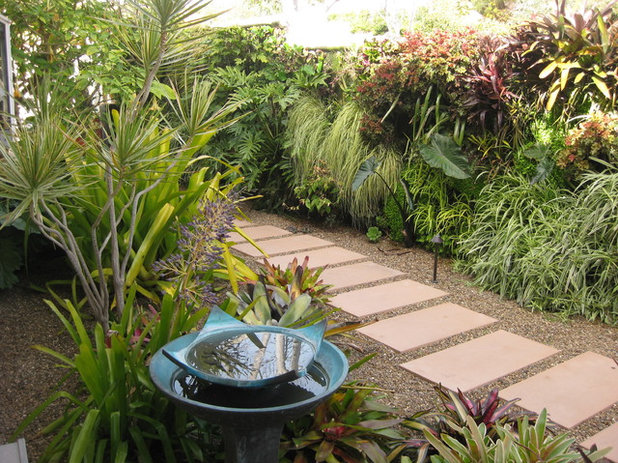
Amelia B. Lima & Associates
Living walls do not have to be perfectly manicured specimens. This tropical living wall creates the perfect boundary for an abundant garden, with its mass of foliage creating a kaleidoscope of color.
Vertical Gardens Raise the Limits for Landscapes

Arthur Road Landscapes
Generous PlantingsTo some extent, abundant planting can be seen as having its roots in traditional cottage gardens. These gardens were based on freedom and spontaneity, with plantings that didn’t look contrived and plants that effortlessly created borders of overflowing beauty.
Mixing plant species and allowing some to self-seed create a rich tapestry; a careful choice of cultivars can prevent the mass mingling of plants found in the wild and create a more stylized swath of color. The plantings should cover all the soil, almost creating a living mulch, and in so doing reduce required weeding and watering.
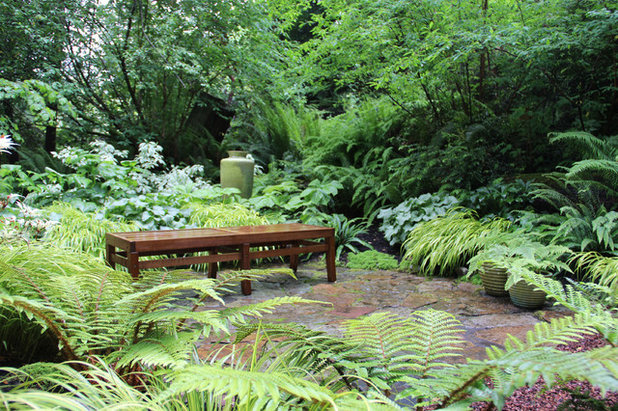
Bliss Garden Design
Planting for a feeling of abundance is about the balance of control over nature, allowing plants to grow in their own space and achieve their natural size and shape with little need for pruning or training.
See more of this wet, shady garden
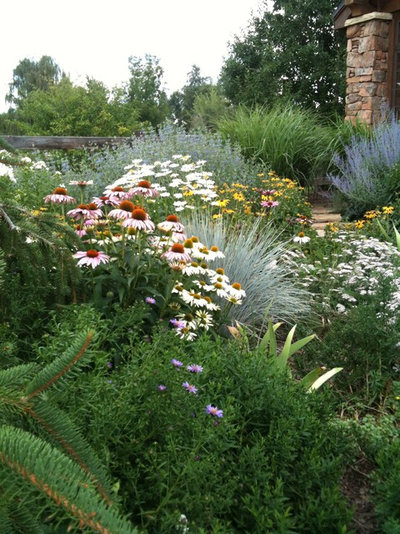
Kingfisher Landscape
The skill in abundant gardens is to create plantings that mingle in a natural manner without becoming a jungle. Herbaceous or garden perennials are perfect, with their wide range of heights and flower and foliage colors and textures, combined with ease of control and growth. Like an impressionist painting, the plantings can be woven together to create a blur of flowers and foliage that is far from the rigid clipped evergreen plantings of modern functional gardens.
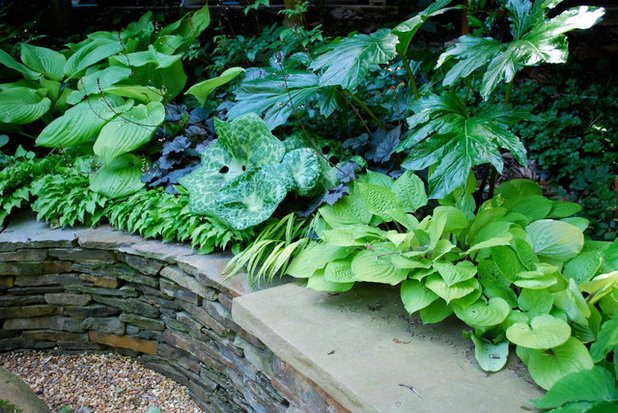
Jay Sifford Garden Design
Abundant gardening demands that there should be no hard edges defining borders and plantings. Lush ground-cover plants can dissolve hard path and wall edges into the plantings’ softness.
Define Your Garden Softly With Planted Borders

Kenneth Philp Landscape Architects
ContainersIn the smallest gardens, containers may be the only way of creating abundance. Pots of all sizes and colors can be mixed and planted with a selection of long-lived foliage plants.
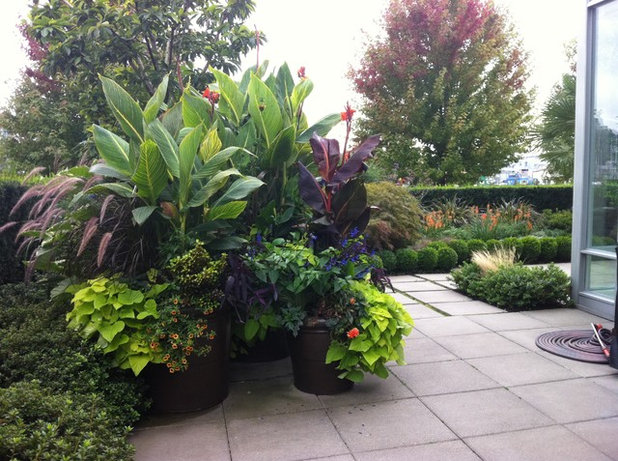
Glenna Partridge Garden Design
These generously planted containers sing of abundance. The wonderful mixture of leaf colors and textures set off with the zing of brightly colored flowers takes center stage.
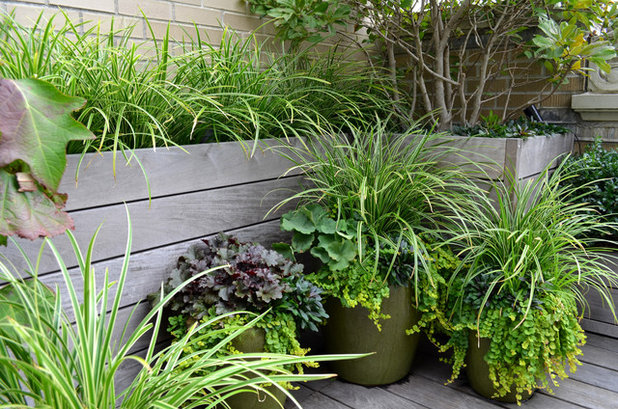
Jeffrey Erb Landscape Design
Here carefully grouped containers planted with a mixture of foliage plants echo those in the raised beds behind, pulling the planting into the intimate decked area.
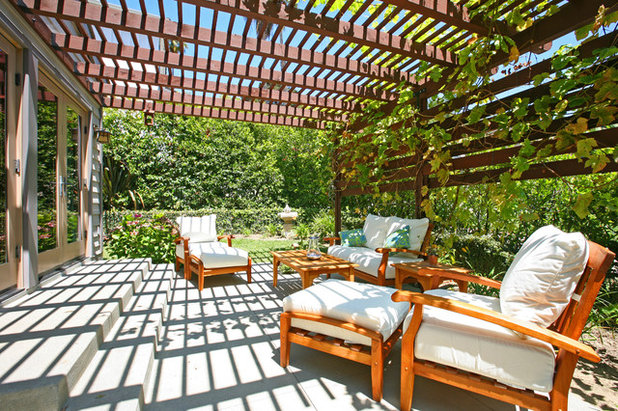
V.I.Photography & Design
Intimate SpacesThis style of planting has the ability to create intimate spaces for sitting or dining, especially in small and courtyard gardens. The planting here extends to the patio ceiling, with an overhead trellis of climbers providing shelter, shade and enclosure.
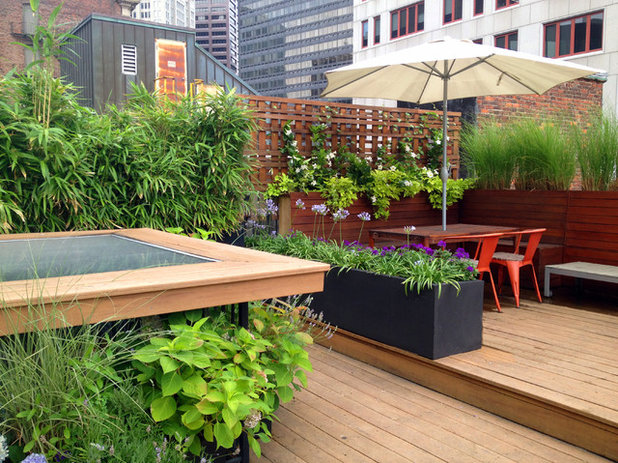
Offshoots, Inc.
Abundant gardening can be seen as creating a plant world that accommodates people, rather than the other way around. But does that provide enough lifestyle space for even the most passionate gardener? Surely there must be a balance between a green oasis and manicured outdoor spaces.
More:Want a More Colorful, Natural Garden? Try a Perennial Meadow
10 Ideas for an Exuberantly Abundant Landscape





